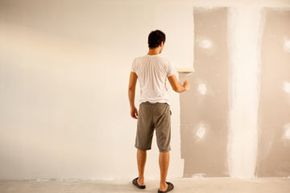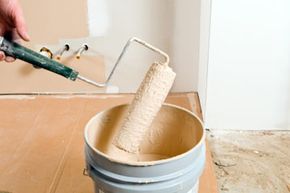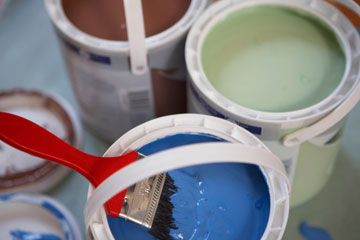I remember how proud I was the first time I painted a room. I didn't realize how much paint drywall can suck up, so I made sure the roller was nice and loaded. That caused drops to splatter here and there, but so what? I'd carefully set drop cloths on the room's newly carpeted floors to protect them. When the paint was dry, I admired my handiwork, then began to clean up. Reaching down to pick up the drop cloths, I was dismayed when they stuck to the new carpet. My "drop cloths" were actually old bed sheets -- sheets so threadbare, the paint drops soaked right through them and onto my new carpet. I learned several valuable lessons about painting drywall that day, mainly not to overload the roller with paint, and to use professional drop cloths.
If you haven't had the pleasure of painting drywall yet, you probably will at some point. Drywall is the most widely used material for finishing interior walls, and is found in homes in many areas of the world [source: Calfinder]. So what is it, exactly? Drywall -- also called Sheetrock, gypsum board and rock lath -- is created by mixing together gypsum plaster and fiber, then wrapping the concoction in a heavy paper and letting it set. Once it's set, the resulting product is a heavy, solid material perfect for forming walls and ceilings [source: Molloy Interiors].
Advertisement
When constructing most homes, builders screw sheets of drywall to the framing. Once that's done, they fill all joints and imperfections with a joint compound, commonly referred to as "mud," and tape over them with a special paper drywall tape. This reinforces the wall or ceiling, plus hides the seams and any imperfections, such as the dimpled areas that result after you insert a screw or nail into drywall. After that, it's ready to be painted.
Painting drywall is relatively easy. However, to get the best results, you should follow a specific process that includes a certain amount of prep work, which you can learn more about on the next page.
Advertisement




